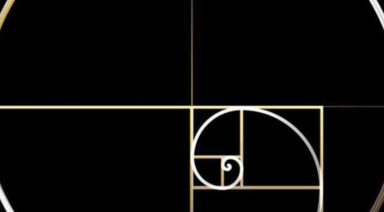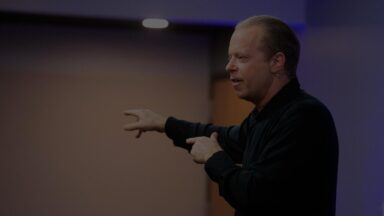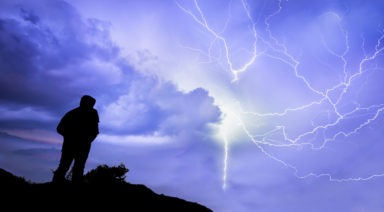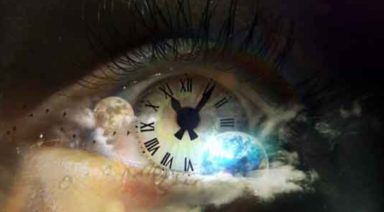Quantum Jumping With The Two Glass Method

“Everything we call real is made of things that cannot be regarded as real. If quantum mechanics hasn’t profoundly shocked you, you haven’t understood it yet.” ~ Nobel Prize winning physicist Niels Bohr
As a kid, I loved the quantum travel tesseract technique from Madeleine L’Engle’s “A Wrinkle in Time.” It would have been handy to collapse space and time during tired walks home from school or visits to the dentist. Eventually, who knows where, I found “how to tesseract” instructions — BG (Before Google). They were disappointingly simple, saying in essence; “If you’re traveling to a destination, visualize yourself already there.” That was it.
One cold November night my junior high friends and I were wishing we had a ride as we walked the two miles home from the movies. I explained the theory, and motivated by the frigid temps, we did it — we visualized arriving at our warm, cozy destination. Didn’t last long; we went back to whatever we had been talking about.
Suddenly we were home. Someone said “Wow. That worked.” Just that simple — our atoms did not disperse and re-organize; there were no special effects. The cold walk was simply over before we knew it. As a result, my slightly spooky reputation was enhanced, which was great, as it deterred mean girls. Now I understand that my friends and I made a “quantum jump.”
I’ve used the method on long plane rides, road trips, during boring lectures, or anytime I preferred to be somewhere other than where I was. More often than not, the trip, class, dentist appointment, or whatever, seems over before I know it.
The two-glass method is as simple as imagining where you would rather be; in fact, that’s exactly what it is. Instructions below, followed by more on quantum science.
A 12 Step Two Glass Quantum Jump Method
You’ll need:
- Two cups or glasses. Doesn’t matter what kind. They don’t need to match, they just need to hold an ounce or two of water.
- Two small pieces of paper, like post-it notes.
- Tape, if you don’t have sticky notes.
- Water.
- A pen.
- Consider something you would like to change.
- Distill it to one or two words and write it on a post-it.
- Stick or tape the paper to one of the glasses.
- Consider what you would rather have — but don’t use a negation of your undesired word and visa-versa, as in, “anxious,” then “non-anxious.” You get the drift — ex. “anxious,” then “relaxed,” “confident,” or “composed.” An online synonym/antonym tool is handy.
- Tape or stick the desired word on the second glass.
- Pour an ounce or two of water in the glass labeled with the word describing what you would like to change.
- Take a moment to ponder how the word makes you feel about your current circumstances. Discouraged? Frustrated? Experience it.
- Pour the water in the empty glass labeled with your preferred outcome.
- Take a moment to consider how you would feel if that second word accurately reflected your state. How would it feel? Good?
- Drink the water, feeling grateful for the new outcome.
- Throw the labels in the trash and wash or discard the glasses.
- Forget about it. Really. Fuggedaboutit.
That’s right. Forget it. Don’t take its temperature every half hour, don’t ruminate on it, and if you do, go do something else. This principal, from esoteric traditions, lies at the heart of all practical magic. Worrying about your goal does more to hinder than help — so don’t.
What we’re calling quantum jumping, a.k.a. multiverse theory, quantum leaps, or reality shift, has long been viewed as exactly that; magic or sorcery. Some follow magic recipes step by step; others understand the formula which is:
Intention + Dedicated Action = Magic.
Set an intention, perform an action dedicated to that intention, and observe the results with detachment, and lo, find yourself at play in the quantum field.
Magic and Quantum Mechanics
Imagine being a yak herder on the Tibetan Plateau 50 years ago. Somebody shows up with portable solar panels and introduces you to artificial light. Or cures your sick yak’s infection with antibiotics. Or plays music on their iphone. Magic, right?
No — technology. So it may be with quantum mechanics. We’re only beginning to understand the physics of intention and thought, searching for practical applications, i.e. The Secret.
Paradoxically, what if those Tibetans, awed by our technology, had mastered quantum reality centuries ago? Developed nagpas and lamas have brought drought-ending rains, and have been known to appear in two places at once. They can sit for hours in the snow wrapped in cotton sheets and end up in a puddle of water, immune to freezing temperatures. They have contests to see who can melt the most snow. Sometimes they accidentally stick a hand through a wall or table, or leave footprints in rock. A lifetime’s education in Tantric traditions can lead to mastery of what appears to be, from our perceptual window, magic. While discipline and instruction are required, the methods can be taught and learned — they’re not “theories.”
Alexandra David-Neel visited Tibet in 1929, returning with stories of Buddhist “magicians and sorcerers” and their feats. Among them were the “lung gompas,” monks that trained with meditation, breathing techniques and physical exercise to enter a state of being “light as a feather.” Lung gompa messengers traveled as much as 200 miles a day, running for 48 hours without rest. Is this a highly developed version of a rudimentary tesseract my friends and I experienced that cold November night? Did the lung gompas master a type of psycho-technology for quantum reality shift? Tibetan-style reality engineering?
Dipping a Toe into Quantum Fields
Reddit forum members share experiences of the two glass, or two cup method with amazement. “It’s disconcerting when things start coming true. Who came up with this exercise anyway? Was it in a book somewhere?” said one member.
Some use pictures rather than words; many experiment with prosperity, weight loss, or relationships. Those who succeed admonish others to relax and forget about it after completing the steps. The more experienced warn newbies to carefully consider the change they ask for; one member reported using a quantum jump method for a serious health issue. She said that the condition was gone, but friends and family were somehow “different,” and that while she was grateful to be well, she missed their former selves.
Others find themselves stunned when a shift occurs. “A few days after jumping, I noticed a few odd events. For example, in my neighborhood there are a lot of black cats. But after, I began seeing white cats. I intuitively felt that it was the universe winking at me. A few projects that I had been working on began to take off. So much so, I literally had a nervous breakdown from the good news. I was no longer a financial wreck.”
And of course some claim complete failure, believing that it was something about themselves that messed it up — well, that’s one way to be “special.”
The insight gained by many is that shifts don’t happen “out there.” Outer reality adjusts to inner intention — quantum fields can respond to deliberate choices and actions. We also have the power to disempower ourselves with our discursive states of mind, expectations, perceived failures, and desperation for escape from current reality.
Be skeptical, willing, playful, whatever. But consider the possibility that your intentions and actions might make magic. And most of all, have fun.
Dr. Joe Dispenza has long researched the human mind, intention, and quantum mechanics. Other Gaia titles explore intention and co-creation; take a trip down the rabbit hole to explore what science is learning about human capacities.
The 37th Parallel – A Line of Mystery and Significance

The 37th parallel is a circle of latitude that runs around the Earth at 37 degrees north or south of the equator. While it may seem like just another line on a map, the 37th parallel has gained an unusual reputation over the years.
Not only does it serve as a border between U.S. states, but it is also considered “America’s Paranormal Highway“—a hotspot for UFO sightings, cattle mutilations, and other unexplained phenomena. Additionally, the 37th parallel north plays a role in human health, geological activity, and historical significance.
This article explores the geographical location of the 37th parallel, its paranormal history, and other ways this latitude has left its mark on science and culture.




































